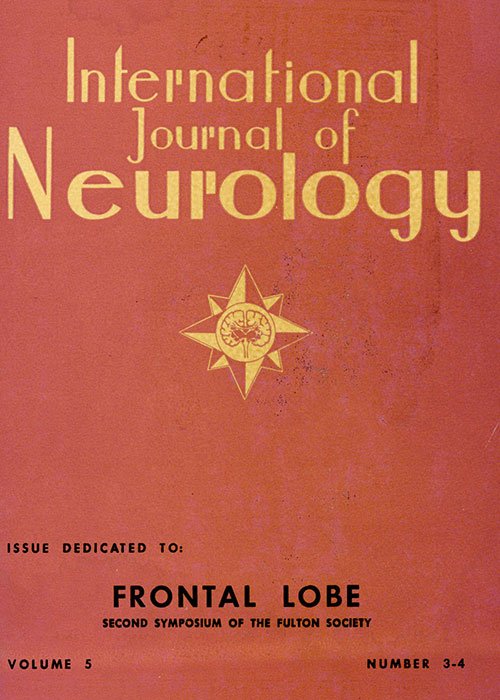Full Issue
DOI:
https://doi.org/10.62486/ijn196616Abstract
The double issue (Numbers 3–4) of Volume 5 of the International Journal of Neurology (1966) was dedicated to the frontal lobe. It opened with the Chairman’s Address and a tribute to John Fulton, recognizing his pioneering contributions to the study of frontal lobe function. The volume gathered a series of landmark papers exploring the structure, connectivity, and behavioral implications of frontal lobe activity across species.
Key studies examined the architectural organization of the human frontal cortex and its functional differentiation (Sanides), the frontal eye fields in monkeys (Brucher), and comparative research on frontal lobe functions in rodents, carnivores, primates, and humans (Teuber). Additional articles analyzed extrapyramidal motor areas (Hassler), *thalamic afferents to the macaque frontal cortex (Krieg), and the supplementary motor area in man (Talairach and Bancaud).
Further contributions addressed frontal–subcortical interrelations using sodium amytal studies (Heath and Galbraith), sensory disturbances and agraphia following prefrontal lesions (Messimy; Hécaen and Angelergues), and the psychological consequences of frontal damage (Zangwill; Whitty; Faust). Clinical reports included analyses of prefrontal epilepsy, bilateral frontal and orbital defects, and a notable case of impaired musical expression after brain injury (Exner and Weingarten).
This issue offered one of the most comprehensive mid-century syntheses on the anatomical, physiological, and psychological dimensions of frontal lobe function, bridging experimental neuroscience and clinical neurology.
Downloads
Published
Issue
Section
License
Copyright (c) 1966 International Journal of Neurology (Author)

This work is licensed under a Creative Commons Attribution 4.0 International License.
The article is distributed under the Creative Commons Attribution 4.0 License. Unless otherwise stated, associated published material is distributed under the same licence.







